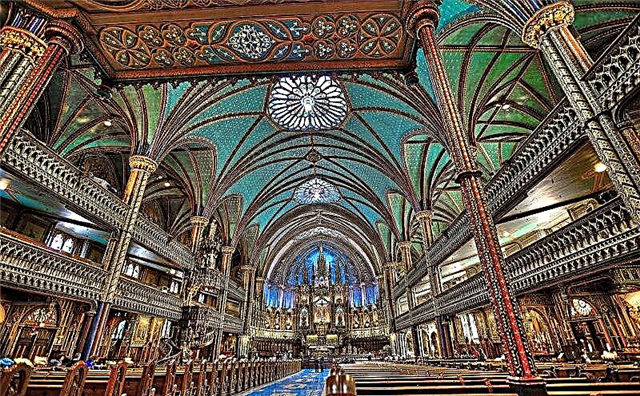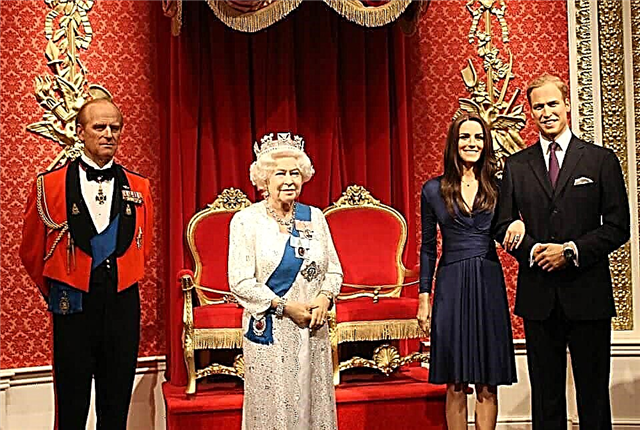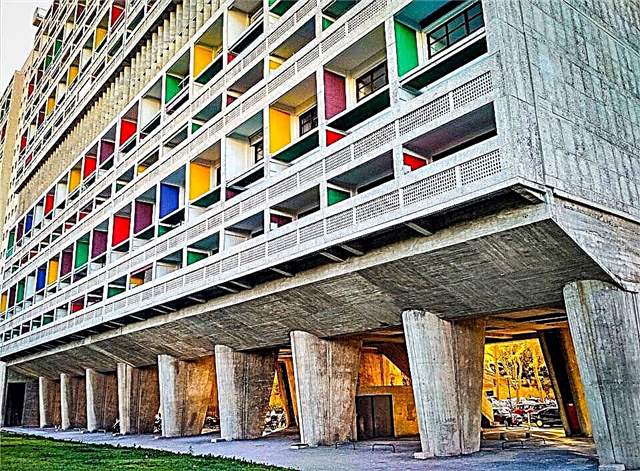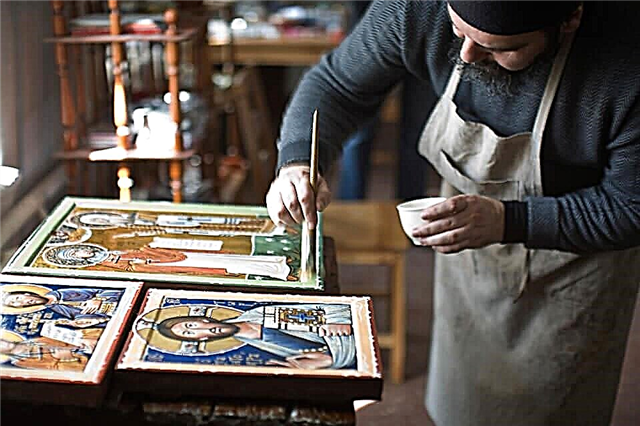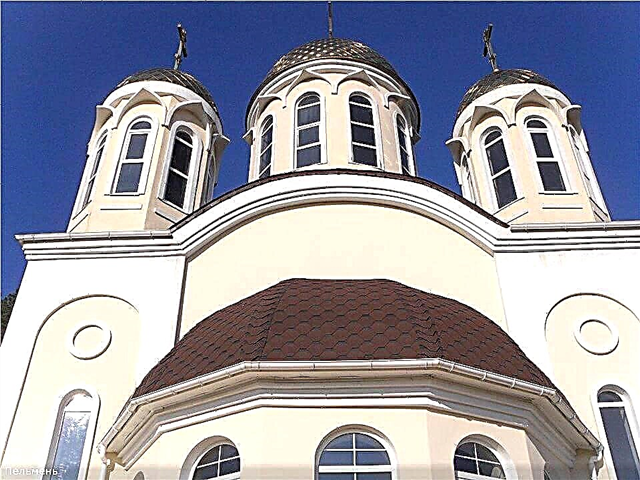In recent years, the world-renowned Black Sea resort of Sochi has acquired the status of a sports and cultural center of Russia. The opportunity to engage in various sports, beach holidays, and receive high-quality treatment have made Sochi an unusually popular city. It will forever go down in history as the venue for the 2014 Winter Olympics.
Even tourists spoiled by foreign beauty recognize Sochi as a worthy competitor to European resorts. But the developing city is famous not only for its cultural and sports facilities, luxury hotels, restaurants and beaches. The churches and temples of Sochi, embodying age-old spirituality and faith, make no less impression on everyone.
Cathedral of Vladimir Equal to the Apostles on Vinogradnaya Gora

It is unlikely that there is at least one person who, at the sight of this architectural gem, will not freeze with admiration. On Vinogradnaya Gora there is the Cathedral of Vladimir Equal of the Apostles, amazing with its incredible beauty.
When you look at it, an association with fabulous towers is born. Erected in 2005-06. designed by architect D. Sokolov, the temple is one of the most elegant Orthodox buildings in Russia. You can endlessly admire them from all sides, like, for example, a painting by Vasnetsov or a Palekh casket.
It is as good on the inside as it is on the outside. It was built as a symbol of the outpost of Orthodoxy on the edge of the Russian land. In the architectural appearance of the striking structure, Old Russian and Byzantine features, characteristic of Orthodox churches, are mixed.
The traditional compositional solution of the building, when a bell tower, a refectory, a temple room with an altar go from west to east, is combined with multicolored and lush decor.
The outer surroundings of the building dedicated to the Baptist of Russia radiate joy and optimism. A helmet-shaped dome, 4 ceramic figures of the apostles, kokoshnik arches, images of seraphim on the arches of the facades, birds of paradise above the cornice are symbols of heavenly powers, prayer purification and spirituality.
Cathedral of the Archangel Michael

The oldest Orthodox church on the Black Sea coast of the North Caucasus is located near the Marine Station. It was built from 1874 to 1891 as a sign of Russia's victory in the Caucasian War, giving it the symbolic name of the Archangel Michael. The rapid construction was hampered by a lack of funds due to the Russian-Turkish war. The fate of the Orthodox building was not easy, but it survived, surviving to this day.
Repeated restorations have returned the sanctuary to its original appearance. The cathedral is an example of Moscow Baroque architecture, with an admixture of elements of other styles.
The building is planned in the form of a 4-sided cross with a high drum towering over it. It is decorated with narrow windows, topped with a gilded dome and a cross. Painted in snow-white color, the temple looks like a white swan against the background of dark greenery.
In front of the temple building there is an elegant chapel "Life-giving source" in honor of the Mother of God. Consecrated water flows from the taps mounted in the columns. The baptismal Iberian church rises in the neighborhood, there is a Sunday school, and a library is open.
Inside, rich murals sparkle with gold, the 3-tiered iconostasis is decorated with numerous icons. In terms of interior decoration, the temple is not inferior to well-known European brethren.
Church of the Transfiguration of the Lord

The ancient settlement of Khosta, which arose in the primitive era, did not even have a small church for many centuries. And only at the beginning of the 20th century, on the initiative of the wife of the Minister of Justice, the construction of a religious object was included in the improvement plan of the settlement.
The consecration of the temple took place in 1914 at the confluence of a large crowd of parishioners. Since 1917 it lost its purpose, and after 1981 it was recognized as a protected architectural monument. The golden shine of the massive round domes and crosses is visible from afar. Coming closer to the religious shrine, you notice the monumental grandeur of Russian-Byzantine architecture.
The sandstone building project was developed by the architect V. A. Ion. The central entrance, to which a wide staircase leads, looks unusually solemn. A massive carved door looks impressive against a white background of walls. High arched windows with openwork metal grilles add grace to the facade.
Next to the main dome shines the dome of the belfry with massive bells. Outwardly, the structure resembles a Jerusalem shrine dedicated to the Transfiguration of the Lord.
The surrounding of the temple is beautiful, which is a garden with oranges, tangerines, olives and an abundance of flowers growing in it. Traditionally, the first ripening fruits after consecration are given to parishioners. Inside there are icons with the relics of the great martyrs, a unique relic - slippers of the miracle worker Spiridon.
Temple of the Image of Christ the Savior Not Made by Hands

Between 2 highways on the way to the Olympic Park, a fabulous building rises. This multi-domed church began to be built in 2005 with the blessing of Patriarch Alexy. In fact, this is a complex of 4 buildings.
The Annunciation building houses the Church of the Annunciation, the refectory and the Museum of Christianity. The second building houses the premises for the sisters of mercy and the Cathedral of Spiridon Trimifuntsky. Each building has its own purpose.
The project of the colorful building belongs to the architect Afuksenidi. The Byzantine style, with a centric domed composition, protruding semi-domes was borrowed from the Cathedral of St. Petersburg. Many multi-colored decorations in the form of arches, pilasters, columns make the building fabulously beautiful. Interior paintings in the spirit of Vasnetsov, created by students of the Art Academy, delight the parishioners.
In the center of the hall, among 4 semi-apses, there is an image of Christ the Almighty surrounded by seraphim. On one of the semi-apses - the figure of the Mother of God with the baby in her arms - a reproduction of Vasnetsov's "Theotokos".
The crypt contains the relics of the saint, discovered during excavations of an ancient temple. The altar is decorated with icons of the Savior Not Made by Hands (17th century), the Holy Trinity, the Matrona of Moscow. The cross with the relics of 40 saints embedded in it is impressive.
Church of the Blessed Matrona of Moscow

A new religious object, which has recently appeared in the Makarenko microdistrict, dedicated to Blessed Matrona of Moscow, was built with donations from the people. Most of them were collected in the neighboring church of St. Andrew the First-Called, next to which a new shrine arose.
Construction lasted 3 years, in 2012 the object was consecrated. The author of the remake project, Archpriest Igor Lavrik, gave the small building a classic look as a 1-head church. A high cross shines on the blue dome. There are 2 mosaic icons on one of the facades. One depicts Matrona of Moscow, the other depicts the Holy Trinity. They were created by an artist specially trained in Greece.
Inside there is also an icon of the saint with interspersed particles of her relics. The luxurious iconostasis, richly decorated and beautifully decorated, amazes. The cathedral is open on weekends and holidays. Services in Church Slavonic are held in the morning and evening.
Temple of the Kazan Icon of the Mother of God

An undoubted architectural decoration, a pleasant place for prayer and spiritual cleansing in the village. Dagomys - Kazan Church. It was built on the initiative of local residents in the late 90s, and in 2000 services were already performed in it. At first it was a one-story building located on a slope. Over time, the idea of expansion arose, and the building "grew" upward due to the 2nd floor.
Today, the temple of the icon of the Kazan Mother of God, located at the top, conquers with its majestic beauty. The lower part of the temple building was consecrated in honor of Sava of Serbia.On the adjacent territory there is a chapel dedicated to the Royal Passion-bearers (2000) and a wooden belfry (2018) 5 helmet-shaped domes installed on drums with arched windows - features of the Russian-Byzantine style.
The light beige color of the facades and the white tone of the cornices, pilasters and corners give a special charm to the exterior of the building. The equipping and transformation of the church continues. A mosaic image of the Mother of God appeared above the central entrance, the arched openings of the porch were glazed.
Work on interior paintings continues. The sketches of decorative ornaments were created by Palekh craftsmen. The texts of the prayers are placed under the many icons. The decoration of the hall pleases the parishioners with irresistible beauty.
Church of Panteleimon the Healer

Residents of the Mamayka microdistrict gained the opportunity to attend services at the local church in 2011. Construction began in 2001, when the blessing of Bishop Filaret was received. On the initiative of Archimandrite Innokenty of Sochi, a church community was registered, and the first services began to be held in one of the premises of the Stavropolye sanatorium. For 10 years, a beautiful church has grown on its territory, reminiscent of an Easter egg in its bright design.
Outwardly, the new building looks like the Cathedral of St. Andrew the First-Called in Kiev. It was he who was taken by the architect Afuksenidi as the basis for the construction of a religious site in Mamaika. The 5-domed brick building with an 8-sided shape with a basement seems to be directed upwards towards the heavens. Graceful white columns contrasting with the bright pink walls of the main facade, an abundance of spiers with crosses give the building a festive solemnity.
The main shrine of the Panteleimon Church is the icon of the Great Martyr Panteleimon with parts of the relics of the saint. It was donated from the Russian Monastery located on Mount Athos in 2000. The parishioners also apply to the particles of the relics of St. Cyprian, transferred here by the Vatican (2007) On the days of great holidays and on Sundays, various services and rituals are held here.
Church of the Holy Apostle Andrew the First-Called

Near the Korchaginsky square in the Zarechny metro area there is a unique religious object for our time. It is made entirely of wood by the eminent woodworkers of modern times. The majestic temple complex in honor of St. Andrew the First-Called has grown in 1 year. Fixed assets were collected by the Kuban Cossacks.
The patron saint of sailors, Andrew, according to legend, became the first disciple-apostle called by Christ. He was allegedly crucified on a diagonal cross, which later became the emblem of the St. Andrew's flag. The building was consecrated by Filaret, Archbishop of Maykop. A wooden blockhouse with a height of a 4-storey building is based on a strong concrete foundation. In general, the whole complex makes an amazing impression.
The main part is a 3-level pyramid topped with a gilded dome and a cross. A tent-domed belfry with a red roof was erected nearby. The interior decoration of the sanctuary is not striking in luxury and splendor, but touches.
There is a small porch and a rather modest altar. But the large iconostasis is lavishly decorated with gilding and icons. Particles of the relics of St. Matrons, St. Andrew the First-Called, mounted in their icons.
Church of the Nativity of John the Baptist

The golden shine of the church dome on Mount Bytkha can be seen from afar. This invitingly shines the church of St. John the Baptist, built 10 years ago (in everyday life, a church). Its appearance is the merit of local residents and patrons who donated funds for the construction. Thanks to this, the sleeping m / area with a population of 15 thousand has acquired an object of religious activities.
Although its completion is not yet complete, services are regularly held here: memorial services, prayers, baptisms and weddings. Not only local residents come here, but also guests of the resort from the nearest sanatoriums. The author of the project is traditionally F. I. Afuksenidi, famous for his previous works.
The 2-storey building of the church, built in the neo-Byzantine style, has 5 golden domes. They are made of stainless steel sheets, titanium-plated. The bell tower is separated from the main building.
The ritual hall can accommodate 300 parishioners at a time. This beautiful beige building with flowing architectural lines looks great surrounded by lush greenery. Here, in a calm atmosphere, spiritual cleansing comes. Sunday school is open on weekends, there is an Orthodox library.
Surb Sarkis

An unusual building for the Russian look with an architecture unusual for Russian churches attracts the attention of tourists.
It is located in the Adler district and is the cathedral of Surb Sarkis (St. Sergius). A modest building made of cinder blocks was built on the initiative of the Mkhitaryan brothers in memory of their father, brother and all the victims of the Armenian genocide. There is a religious object next to the cemetery where the relatives of the Mkhitaryans are buried. Their graves are marked by a chapel erected in 2001.
The Armenian Apostolic Church, as Surb Sarkis is otherwise called, was consecrated in 2011 by the head of the New Nakhichevan Diocese, Tiran Kuregyan. The design of the building in the neo-Armenian style was carried out by the architect Zadikyan. Its architecture contains the classic features of Armenian temple architecture.
The abundance of straight lines and triangular edges are elements of modernity. A monument to the victims of the 1915 Ottoman genocide was erected on the adjacent territory. It attracts attention with its expressive simplicity.


